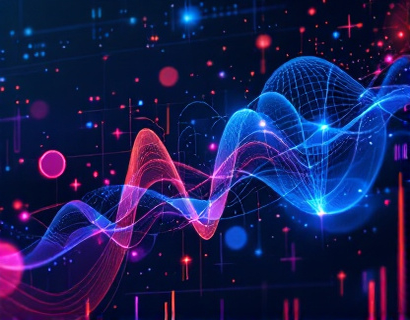Effortless Multi-Platform Alert Management for Professionals and Organizations
In today's fast-paced world, staying informed and organized is crucial for professionals and organizations. A sophisticated multi-platform notification system can significantly enhance communication and productivity by delivering timely notifications across various outlets. This system is designed to adapt to specific needs, ensuring that users never miss important updates, regardless of their schedule or preferences.
One of the key features of an effective notification system is its ability to offer universal time-based notifications. This means that alerts can be set to trigger at specific times, ensuring that users receive critical information when they are most likely to be available and attentive. For instance, a project manager might set an alert to notify the team at the start of each day or at specific intervals throughout the workday. This approach helps maintain a consistent flow of information without overwhelming users with constant notifications.
In addition to universal time-based notifications, the system also supports block time-based reminders. This feature allows users to set alerts that are active during certain periods and inactive during others. For example, a sales team might prefer to receive notifications only during business hours, avoiding disruptions outside of work time. This flexibility ensures that notifications are relevant and timely, reducing the risk of important messages being overlooked due to poor timing.
The ability to customize notification schedules based on individual or team preferences is a significant advantage. Professionals and organizations often have varying work patterns and time zones, making a one-size-fits-all approach impractical. By allowing users to define their own schedules, the notification system can be tailored to fit diverse needs, ensuring that everyone receives alerts at the most appropriate times.
Another critical aspect of an efficient notification system is its multi-platform compatibility. In a world where professionals and organizations use a variety of devices and platforms, a notification system that works seamlessly across all these channels is essential. Whether you are checking emails on a desktop computer, receiving messages on a smartphone, or using a tablet for on-the-go updates, the system should provide a consistent and reliable experience.
To achieve this, the notification system should integrate with popular communication tools and platforms, such as email, SMS, push notifications, and instant messaging apps. This integration ensures that users can receive alerts through their preferred method, enhancing the overall user experience. For instance, a user might choose to receive critical alerts via SMS for immediate attention, while less urgent notifications are sent via email or push notifications.
Moreover, the system should offer advanced filtering and categorization options. This allows users to prioritize notifications based on their importance or relevance. For example, alerts related to urgent project deadlines can be marked as high priority, ensuring they stand out and are addressed promptly. Less critical notifications, such as routine updates or reminders, can be set to a lower priority, reducing clutter and helping users focus on what truly matters.
Customizable alert templates are another valuable feature. These templates can be pre-designed to include essential information such as the alert type, sender, and a brief description. Users can further personalize these templates by adding specific details or links, making it easier to act on the notification without needing to open additional applications or websites. This streamlined approach saves time and enhances efficiency, allowing professionals to respond quickly and effectively.
The system should also support batch processing of notifications. In scenarios where multiple alerts are triggered simultaneously, receiving them one by one can be overwhelming and time-consuming. Batch processing allows users to view and manage multiple notifications at once, providing a summary of all alerts and enabling quick action. This feature is particularly useful during peak activity periods when managing individual notifications manually would be impractical.
For organizations, centralized management of notifications is crucial. The system should provide administrative controls that allow managers to oversee and manage notifications for their teams. This includes setting global notification preferences, creating custom alert categories, and monitoring the status of notifications across all user devices. Such controls ensure consistency and compliance within the organization, while also providing insights into notification usage and effectiveness.
Security and privacy are paramount in any notification system. The system must comply with data protection regulations and implement robust security measures to safeguard user information. Encryption of data both in transit and at rest, along with secure authentication methods, ensures that sensitive information remains protected. Users should have control over their notification settings and the ability to manage their data privacy preferences easily.
To further enhance the user experience, the system can incorporate machine learning and AI technologies. These technologies can analyze user behavior and preferences to optimize notification delivery. For example, the system might learn that a user tends to check emails during specific times of the day and adjust the timing of notifications accordingly. This personalized approach not only improves user satisfaction but also increases the likelihood of users engaging with the notifications.
Scalability is another important consideration for professionals and organizations of all sizes. The notification system should be capable of handling a growing number of users and notifications without compromising performance. Cloud-based infrastructure can provide the necessary scalability, ensuring that the system remains reliable and responsive even as the user base expands.
In addition to technical features, the system should offer intuitive and user-friendly interfaces. Both users and administrators should find it easy to navigate and manage notifications. Clear and concise dashboards, straightforward setup processes, and comprehensive help resources contribute to a positive user experience. Training and support should be readily available to assist users in maximizing the system's capabilities.
Finally, continuous improvement and updates are essential to keep the notification system relevant and effective. Regular updates can introduce new features, enhance existing functionalities, and address any issues that arise. Feedback from users should be actively sought and incorporated into the development process, ensuring that the system evolves to meet the changing needs of professionals and organizations.
In conclusion, a sophisticated multi-platform notification system offers numerous benefits for professionals and organizations. By providing timely, customizable, and secure notifications across various platforms, such a system can significantly streamline communication and boost productivity. Whether it's through universal time-based notifications, block time-based reminders, or advanced features like batch processing and centralized management, the system adapts to meet the unique demands of today's fast-paced environment. Embracing this technology can help professionals and organizations stay ahead, ensuring they never miss a critical update again.










































